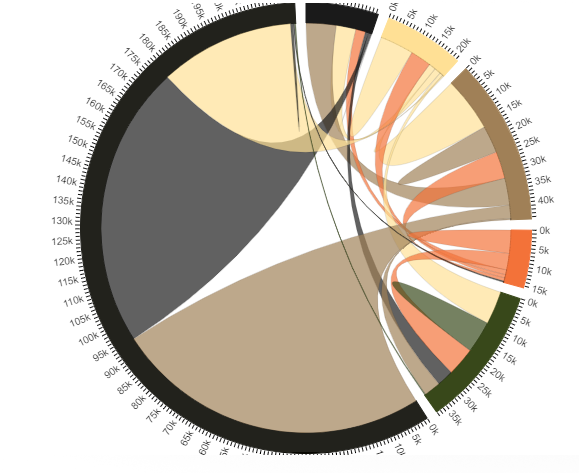Difference between revisions of "Manuals/calci/CHORDDIAGRAM"
Jump to navigation
Jump to search
| Line 1: | Line 1: | ||
| − | + | =CHORDDIAGRAM()= | |
| + | CHORDDIAGRAM() shows the Chord Diagram. | ||
==Description== | ==Description== | ||
| − | * | + | |
| + | *A chord diagram is a graphical method of displaying the inter relationships between data in a matrix. | ||
*The connections between entities is used to display that they share something in common. | *The connections between entities is used to display that they share something in common. | ||
*This makes Chord Diagrams ideal for comparing the similarities within a dataset or between different groups of data. | *This makes Chord Diagrams ideal for comparing the similarities within a dataset or between different groups of data. | ||
Revision as of 15:50, 4 January 2018
CHORDDIAGRAM()
CHORDDIAGRAM() shows the Chord Diagram.
Description
- A chord diagram is a graphical method of displaying the inter relationships between data in a matrix.
- The connections between entities is used to display that they share something in common.
- This makes Chord Diagrams ideal for comparing the similarities within a dataset or between different groups of data.
- The data are arranged around a circle with the relationships between the data points typically drawn as arcs connecting the data.
- Values are assigned to each connection, which is represented proportionally by the size of each arc.
- Colour can be used to group the data into different categories, which aids in making comparisons and distinguishing groups.
- Over-cluttering becomes an issue with Chord Diagrams, which happens when there are too many connections displayed.
Examples
- CHORDDIAGRAM()
